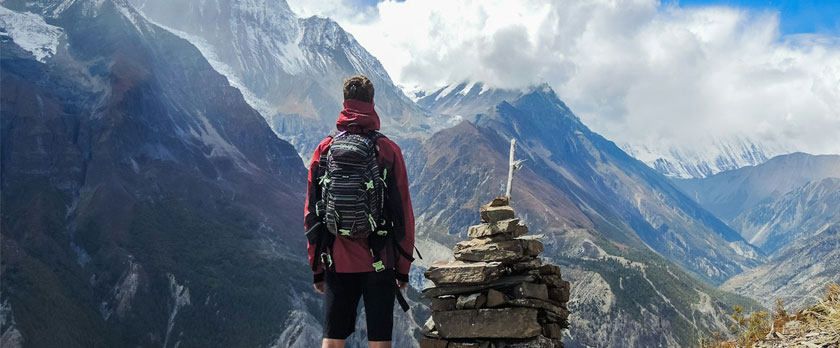Adventure travel seems like it’s only for people with serious money to burn. You know the type — those Instagram accounts where someone’s always dangling off a cliff in New Zealand or posing with llamas in Peru, and you’re thinking “well, that’s nice if you’ve got daddy’s credit card.”
But here’s something I learned the hard way: most of those adventure travelers aren’t actually loaded. They’re just way better a
Stop Chasing the Famous Spots (At Least at First)
Everyone wants to tick off the bucket list destinations, but those places got famous partly because they’re amazing and partly because they’re really good at charging tourists premium prices for everything.
Take Iceland, for example. Gorgeous country, incredible landscapes, and you’ll blow through $200 a day just existing there. But you know what? Romania has some seriously dramatic mountains, medieval castles, and landscapes that’ll make your jaw drop, and you can live there for $40 a day. Same goes for Slovakia instead of Switzerland, or Turkey instead of… well, pretty much anywhere else for rock climbing.
I’m not saying skip the famous places forever. Just maybe don’t start there when you’re figuring out if adventure travel is even your thing.
The other trick is timing everything wrong on purpose. Want to hike in the Alps? Go in October when it’s gorgeous but all the summer tourists have gone home. Sure, some high altitude trails might be closed, but you’ll have the lower elevation hikes mostly to yourself and pay half what you would in July.
The Gear Trap (And How to Avoid It)
This is where people blow their budgets before they even leave home. You decide you want to try backpacking, so you spend $2000 on gear for a hobby you’ve never actually done. Six months later, half of it’s collecting dust in your closet.
Start cheap and upgrade gradually. That $300 sleeping bag might be amazing, but a $75 one will keep you alive and comfortable while you figure out if you actually like sleeping on the ground. Same with boots, backpacks, and pretty much everything else.
The outdoor gear community is actually pretty good about buying and selling used stuff. Check Facebook groups for your local hiking clubs, or hang around climbing gyms where people are always upgrading their gear. I’ve gotten some of my best equipment from climbers who decided they needed the latest and greatest version of something that was working perfectly fine.
End-of-season sales are your friend too. Last year’s tent works exactly the same as this year’s tent, but costs half as much in September.
Getting There Without Going Broke
Transportation usually costs way more than the actual adventure, which is kind of backwards when you think about it. But there are ways around this.
Public transportation goes to more places than you’d expect. Some of the best hiking I’ve ever done has been accessible by bus or train. Takes longer, sure, but it’s also cheaper and you see more of the country along the way.
For longer trips, overland travel can actually save money while giving you more adventures. Instead of flying between countries, take buses or trains and see what’s in between. Some of my best unexpected discoveries have happened during those “transit” days.
Where to Sleep (Hint: Not Always in Hotels)
Camping obviously saves money, but do your homework first. Some places have strict rules about where you can camp, and others have unofficial camping spots that locals know about but tourists don’t. Ask around when you get somewhere — other backpackers usually have the best intel.
Hostels in adventure destinations are different from party hostels in cities. They’re more likely to have gear storage, places to dry wet clothes, and other hikers to share information with. Plus, hostel staff in outdoor towns usually know all the local secrets.
House-sitting is something I wish I’d discovered earlier. Free accommodation in exchange for watching someone’s cat or watering their plants? Yes, please. Works especially well if you’re planning longer trips and can be flexible about dates.
The Local Price vs Tourist Price Reality
This is huge and most people never figure it out. That guided hiking trip that costs $150 through your hotel? The same local guide might charge $40 if you book directly with them. The markup for booking through tourist channels is often ridiculous.
Learning even basic phrases in the local language helps more than you’d think. Not because people are trying to rip you off (usually), but because they assume anyone who speaks some local language probably knows what things should cost.
Same with food. Eating where the guides and local outdoor workers eat will cost you a quarter of what the tourist restaurants charge, and the food is often better anyway.
When to Spend Money (Because Sometimes You Should)
Don’t be penny-wise and pound-foolish with safety stuff. If you need a qualified guide for technical climbing or dangerous terrain, pay for a real one. If you need proper cold weather gear for high altitude, get gear that actually works.
The goal isn’t to spend as little as possible, it’s to spend money on things that matter and save on things that don’t. That might mean splurging on good boots but sleeping in a tent instead of a lodge.
The Group Thing Actually Works
I used to think group travel was for people who couldn’t handle traveling alone, but it turns out there are some real advantages beyond just splitting costs.
Adventure travel groups can give you access to activities and areas that would be way more expensive or complicated to arrange solo. Plus, having experienced people around when you’re trying new activities is actually pretty valuable.
Even just finding one other person to travel with cuts accommodation costs in half and gives you someone to split guide fees and transportation with.
The Real Secret
The best adventure travel experiences often happen when things don’t go according to plan anyway. Some of my favorite stories involve missed connections, closed trails, and having to figure out alternatives on the fly.
Budget adventure travel isn’t about suffering through uncomfortable situations to save money. It’s about being creative and flexible enough to have incredible experiences without spending a fortune. And honestly? Those creative solutions often lead to better stories than the expensive, organized version would have anyway.


